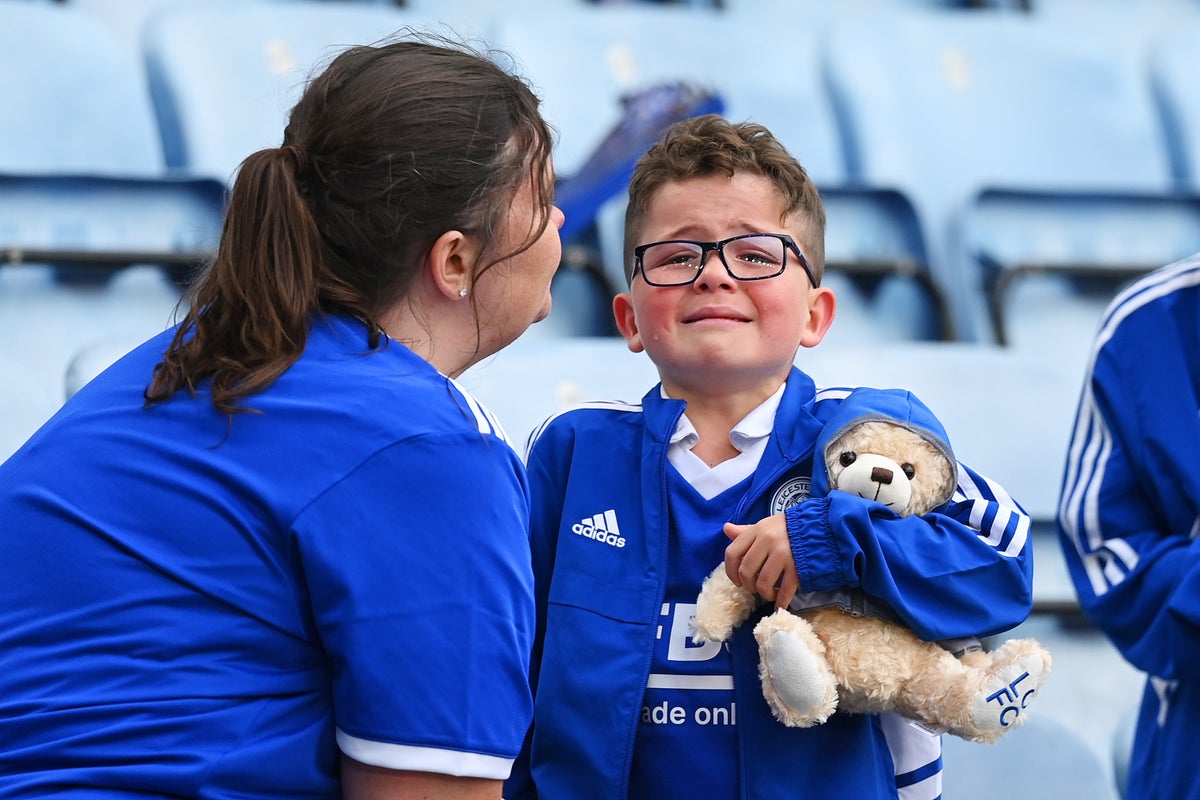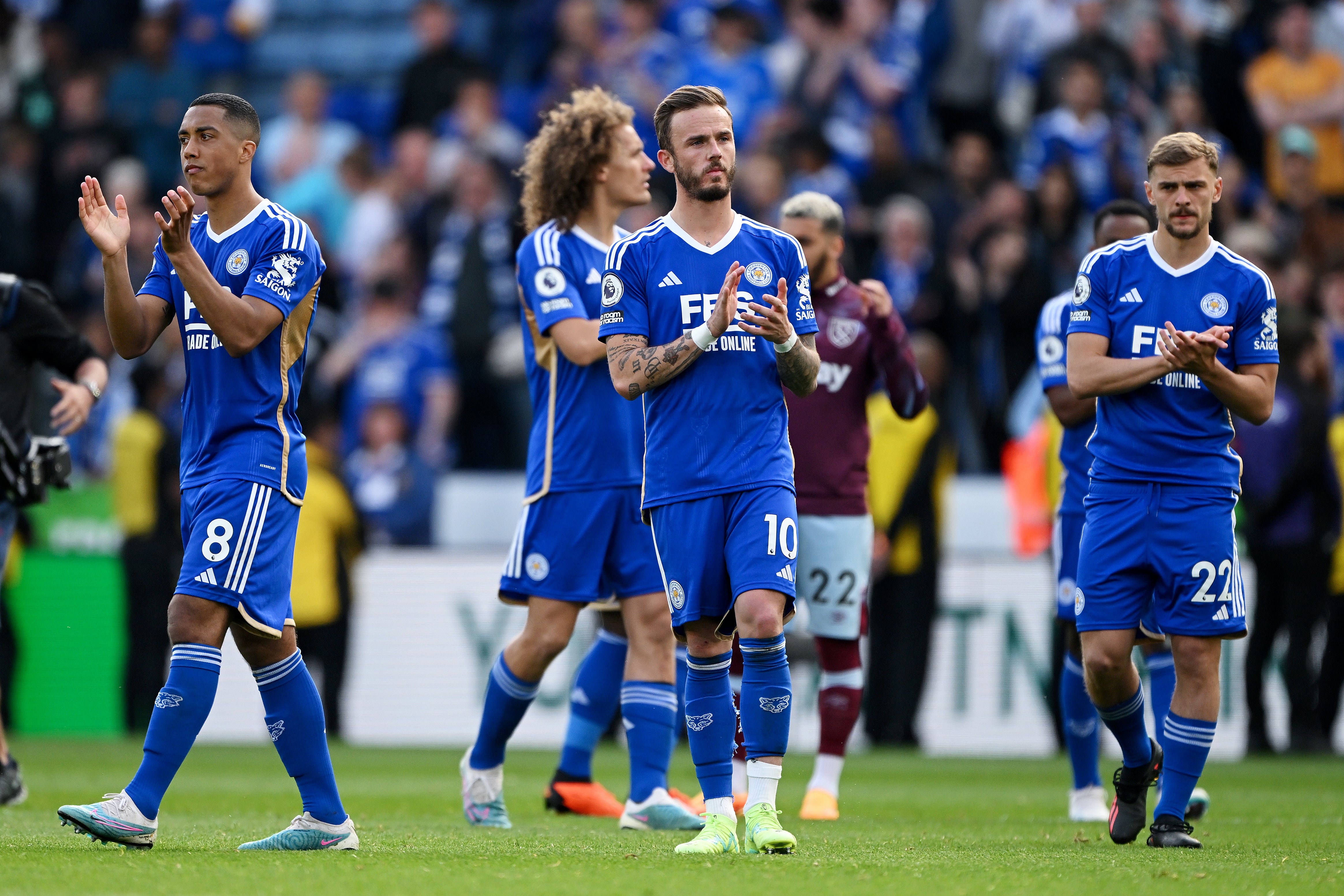
On the day that one of the most sensational spells in any club’s history ended, many of the Leicester City squad and staff inevitably discussed “how it had come to this”. There was a general feeling that a wider malaise had afflicted the team, affecting “confidence and belief”. Some were more direct: “Brendan.”
Questions can be asked of Brendan Rodgers but it still feels wrong to put so much on a manager who lifted the club to the first FA Cup win in their history and successive fifth-place finishes. That really just illustrates how thin the margins can end up being for those outside the mega elite, and how even “model clubs” can quickly become examples of something else entirely. There is even a lesson here for a club as brilliantly run as Brighton.
Both of Leicester’s fifth-place finishes came in Covid seasons, as the wider game itself lost so much money, and the club’s owners suffered huge losses from the immense impact on their duty-free business. Had either of those campaigns brought Champions League football, and the greater prize money it produces, they might well have had enough to prevent the deep drop-off that has now seen them fall down to the Championship.
Many with knowledge of the club ultimately put it down to a lack of investment to build on the fine team they had. Uefa’s new financial sustainability regulations actually meant they had to go in the opposite direction, to bring down a huge expenditure-to-revenue ratio.
Others from the industry argue that it goes even deeper, and beyond the money spent. It was how it was spent. The recruitment that had served them so well for half a decade has actually been “woefully inadequate” for at least five windows.
As an example of that, Rodgers badly needed a ball-playing centre-half after winning the FA Cup, in order to pin his tactical idea together but also bring the team on. Leicester instead signed Jannik Vestergaard for a fee understood to be around £16m, even though he had one year left on his Southampton contract. The Dane was just never a fit, and it meant that Leicester couldn’t go back into the market in the same way.

It was quite a difference from so seamlessly replacing Harry Maguire and shows why Leicester have now fallen so far. It also proves something else, separate from the club.
The idea of buying low and selling high is the obvious model for so many of those outside the elite due to the economic stratification of the game, but it is still asking so much to get it right continuously. In some cases, one slip can cause you to fall much more quickly. Leicester were wealthy enough to be insulated from that but not from the reality that it is statistically impossible to keep that going indefinitely.
It was this that deepened the concerning mood within the club in the summer, even if there is a fair argument that the Rodgers era was already going “stale”. That does happen, but what happened here was that the effect got worse. Leicester needed a change. The club instead hung on, in part due to the finances. Rodgers himself didn’t have the same brightness about him. It all got rather dull and began to cascade.
The brutal truth for the players is that none of this is a sufficient excuse for where they are. Their starting line-up was stronger than half the teams in the Premier League. That will be emphasised by so many top-six clubs coming in for their players. James Maddison is expected to go to Newcastle United. Aston Villa look favourites for Harvey Barnes, but they will now have considerable competition. Youri Tielemans has been looked at by almost every one of the wealthiest seven clubs.
None of these players should have been in this situation, no matter how bad it was getting. That is summed up by the fact that, before you even get to the fees that will be paid this summer, this is one of the best-paid squads to ever be relegated. The wage bill was one of the highest in the Premier League.
In going down, Leicester have actually defied the economic realities of the sport in the same way they did in enjoying one of the sport’s greatest peaks. The dream they have lived has had the most abrupt wake-up.

Appropriately, there remains the sense they just “sleepwalked” into this situation, “too good to go down”, all of that. In some ways, the speed with which it all unravelled ensured no one really grasped what was actually happening until it was too late.
If an era has now been consigned to history, though, it doesn’t necessarily mean it is entirely negative for the future. Leicester have to sell but still have so many advantages over the rest of the Championship. They did use the sensational Premier League success of 2016 to build a new infrastructure, landmarked in their hugely impressive Seagrave training ground. They could well come straight back up.
There is something else to be recognised here. Over the past seven years, Leicester have enjoyed more glory and deeper emotion than most clubs have in their entire history. They had the most sensational title win of all. They then won the FA Cup at last, having previously lost four finals and had that heavy weight over the club.
And that’s only when you consider the successes. This is also a club that had that great escape, the nature of Nigel Pearson’s departure, Claudio Ranieri’s surprise appointment and shock sacking, and their club legend’s wife getting involved in a media circus. Tragically, in the true sense of the word, and in something that really warrants a solemn separate recognition, there was the death of the owner Vichai Srivaddhanaprabha and those who were travelling with him.
That is almost too much to even register. It is little wonder that Dean Smith said after the team’s final game of the season on Sunday that he couldn’t explain how this happened. And yet it is traceable. It’s also something other clubs can look at. One of the most remarkable Premier League stories of all, naturally, has a few lessons.










